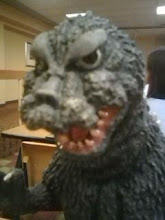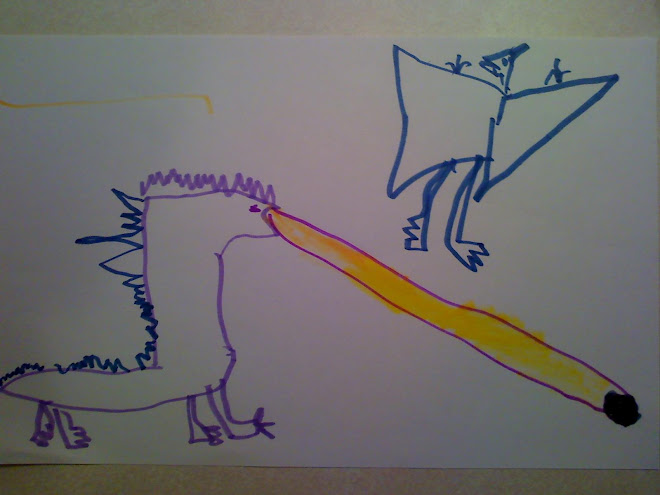 Here at Monsterland Ohio it has become a tradition to watch the original King Kong on Thanksgiving night. This is part homage to UHF station traditions of the past; part recollection of seeing Kong at my grandparents' house as a kid; and part making new memories as a family today. At any rate, it is as good an excuse as any for a viewing of the standard-setting, granddaddy giant monster epic.
Here at Monsterland Ohio it has become a tradition to watch the original King Kong on Thanksgiving night. This is part homage to UHF station traditions of the past; part recollection of seeing Kong at my grandparents' house as a kid; and part making new memories as a family today. At any rate, it is as good an excuse as any for a viewing of the standard-setting, granddaddy giant monster epic.The story of Kong needs no synopsis, so here are a few full-bellied impressions of the classic creature feature.
I was struck by the casting this time around. Each character is embodied by the perfect actor for the task. Everyone seems tailor-made for their role. I especially like Robert Armstrong's cocksure Carl Denham. Fay Wray's Ann Darrow is more than just a "scream queen," yet with none of the "I-think-I'm-falling-for-the-big-guy" sentimentality of the Peter Jackson version.
I have come to appreciate the Max Steiner score (the opening theme of descending notes is almost as hair-raising as Ifukube's regal Godzilla marches), but what really stood out during this viewing were the moments when the score drops out completely, heightening the drama of the on-screen action (such as the time when the poor lug (who inexplicably climbs the tree) becomes a carnivorous dino snack).
Then there's Kong. What makes people want to watch him is that he is not merely a special effect. Willis O'Brien succeeded in creating a character, one frame of film at a time. There's no question Kong is a monster, stomping, chewing and killing the relatively innocent with wild abandon--and yet most viewers hate to see the big gorilla take that final, loose-limbed plunge off the Empire State. Garnering such sympathy would be a pretty nifty piece of acting--but we're talking about an immobile wire-and-fur figure given the illusion of life and movement through a painstaking photographic process. The result is an instantly recognizable personality, and the technique used to render that character enhances his singularity and eccentricities. While some might decry stop-motion as antiquated, I am of the opinion that the method only adds to the particularity of Kong as a unique creature.
Entire books have been written about the subtext(s) of King Kong and what allegories may or may not present themselves in the story. The beauty of Kong is that, for all such philosophising (intriguing as it is), the film is still enjoyable on its own terms--as a rip-roaring, exotic action picture that seeks simply to astound, and does so, royally.


































































Kong is unimaginable with out Steiner's score, which was so powerful and revolutionary that Oscar Levant suggested that the film be advertised as "a concert of Max's music, with accompanying pictures". His use of lietmotifs set the style of designing a score that John Williams would use 40 years later in Star Wars; Steiner also worked with recording engineer Murray Spivack to actually change the pitch of sound effects to get them to better blend with the score. As you point out, Steiner also knew the value of silence...did you ever notice that there is NO MUSIC after the titles until they arrive at Skull Island? The music sneaks in subtly with the native drums, and continues to build as the nightmare unfolds. Ifukube actually builds on Steiner's work (everyone at Toho had seen Kong) and used many of Steiner's devices to build suspense.
ReplyDeleteKong Executive Producer David O. Selznick understood that great music was going to be necessary to make the animated monsters convincingly (just as Harryhausen and Schneer did when they began using Bernard Herrmann), and when RKO balked at spending money on original music for Kong (they were going to use library tracks), Selznick gave Steiner $50,000 of his own money to insure that the score would be sufficiently impressive, and played by a large (for that time) orchestra. I think the picture would simply have died without it.
Archie Waugh